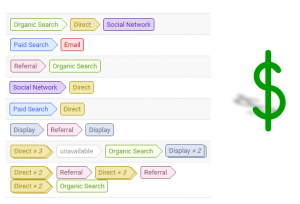On November 27th this year (the day after Thanksgiving in the United States), consumers will head online to access an incredible range of digital savings and limited-time promotions. Known as Black Friday, this unofficial holiday signals the beginning of the festive period for consumers and has remained the most lucrative shopping day in the U.S. since 2001.
Despite being renowned as an American phenomenon, however, Black Friday is actually observed in 15 countries across the globe (including the UK). It is a rapidly growing entity in Britain especially, with an estimated 75% of all consumers now fully aware of Black Friday and a further 22% known to have purchased something during this 24-hour period.
How your business should prepare for Black Friday
With these facts in mind, e-commerce companies across a multitude of markets can expect to experience significantly increased volumes of traffic and sales transactions on Black Friday. Such sudden and prolonged spikes in activity can bring down even the most established of websites, however, while intense competition in your chosen market can also cause you to lose business.
It is therefore crucial that your venture is fully prepared, so consider the following steps towards optimizing your commercial strategy this Black Friday: –
Clearly define your offers and Sales goals
While Black Friday exposes your business to a large number of sales prospects and new customers, it is important to establish clearly defined and realistic revenue goals. This should take the form of an accurate sales forecast, which will establish a target for your company to hit both in terms of volume and bottom line revenue. Without this, you run the risk of either underestimating demand and disappointing customers or being left with excess stock once Black Friday has come to an end.
To avoid this, you should look to review your historical Black Friday sales results and pay particular attention to the number of items sold and your estimated profit margin. Take statistics from the last five years as a reference point, before determining averages that will help you to establish a precise inventory, marketing spend and pricing plan for this years’ event. While there is no guarantee that this would be accurate, it affords you the best possible chance to optimize profit.
Establish a viable Contingency plan
With a viable plan of action in mind, the next step is to create a contingency plan that identifies potential weaknesses across your website and addresses these in a proactive manner. This can help to minimize downtime and the potential cost impact of this, while it also negates any risk posed by third party vendor failures or disruptions.
The first stage of this process is to identify the various components of your website that are most vulnerable, particularly servers, load balancers and any associated applications. By analyzing these closely along with third-party vendors, you can isolate potential issues and streamline the troubleshooting process accordingly. While your strategy will therefore change depending on the result of your findings, it is standard practice to build redundancies into your first party infrastructure and retain the ability to turn off (or in extreme instances replace) third party vendors in real-time.
Develop a Creative and engaging Error Page
On a final note, it is also important to think outside of the box and implement creative solutions to typical Black Friday issues. Sudden and sustained traffic spikes can overwhelm individual landing pages, for example, particularly those relating to specific products and the final checkout process. If this does happen, your site may experience costly downtime as an ugly error page forces customers to check out your competitors’ websites.
Perhaps the biggest issue with basic error pages is that they give the impression of a business that has no control over such technical glitches. You can avoid this with the simple investment of time, however, initially by experimenting with CSS styling to create a funny, stylish and interactive error page. The impact of this can be augmented with a carefully worded message that conveys an apology and confirmation of the problem at hand, while the copy should also be finished with reassurance that normal service will be resumed shortly.
Business & Finance Articles on Business 2 Community(57)







